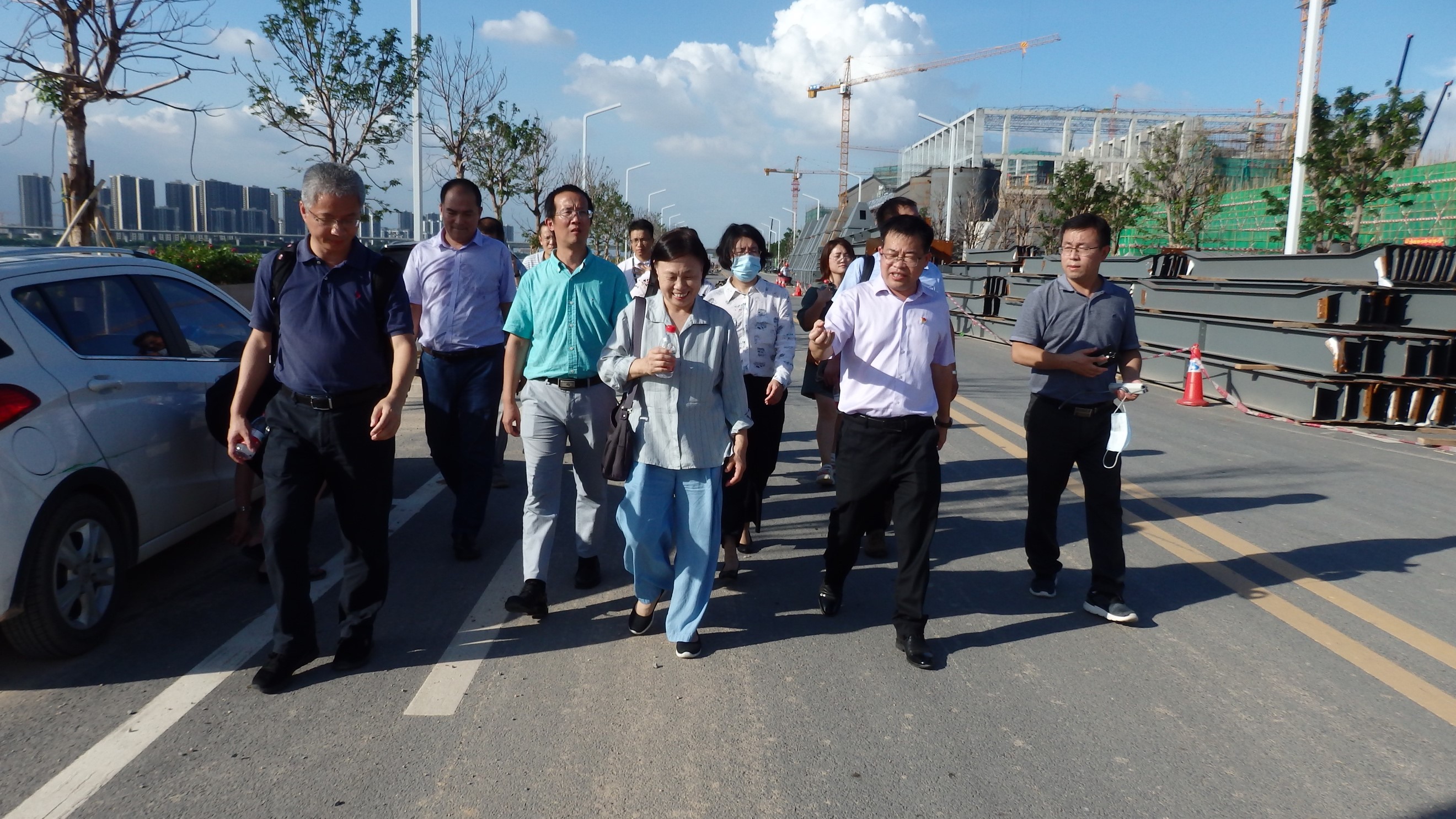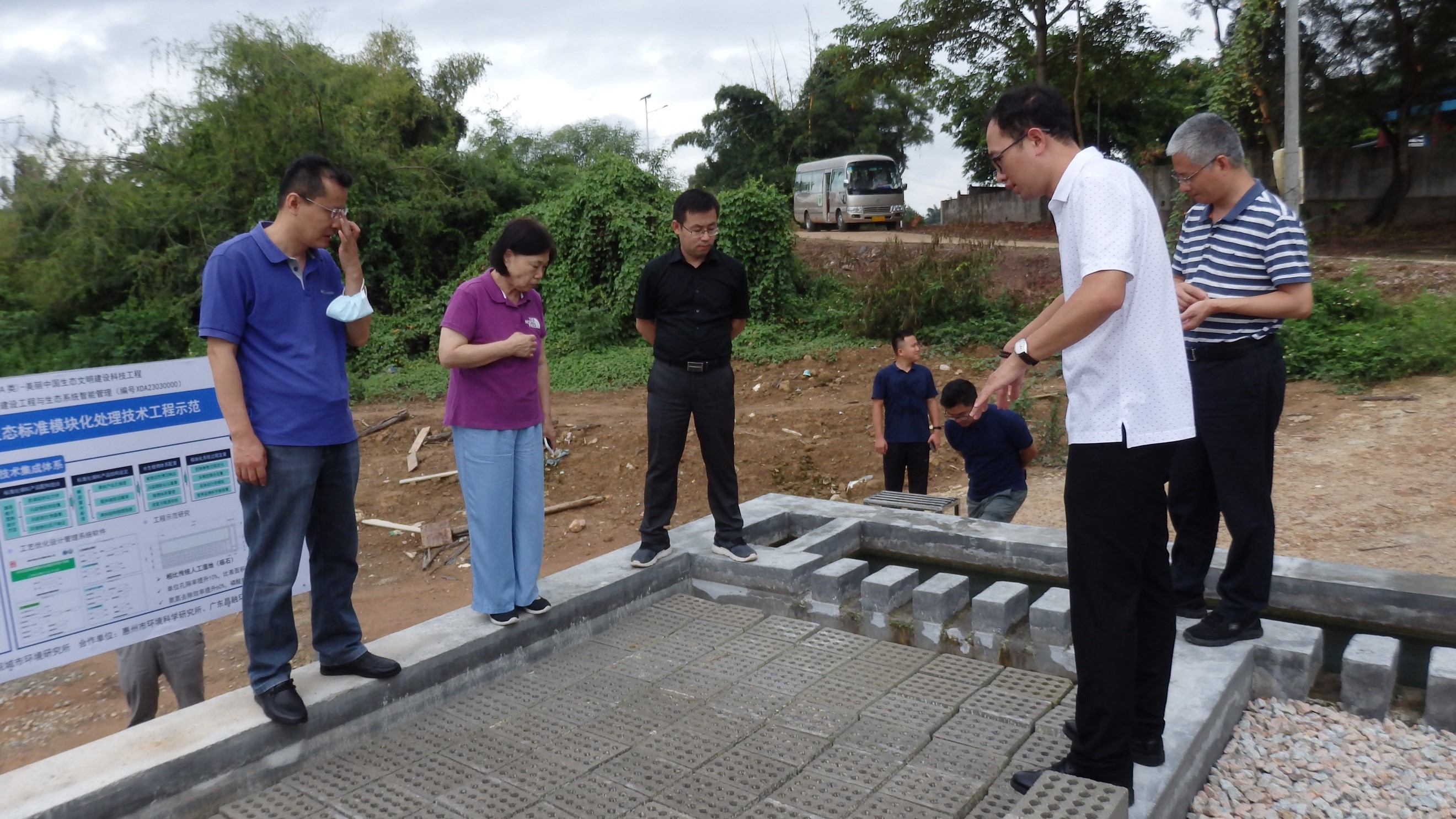From September 17 to 18, the third project of "Beautiful China Ecological Civilization Construction S&T Project", "Ecological Construction Project and Ecological Intelligent Management Demonstration in City Clusters of the Guangdong-Hong Kong-Macao Great Bay Area" (hereinafter referred to as "GBA Project") conducted on-site investigation on the demonstration projects in Shenzhen, Dongguan and Huizhou in Guangdong Province. Director ZHAI Jinliang and Officer XING Xiaoxu, the Resource and Environment Department of the Bureau of S&T for Development CAS, Prof. CHANG Xu, the supervision expert of “Beautiful China” Project, and more than 40 experts from Shenzhen Ecological Environment Bureau, Huizhou Ecological Environment Bureau, Dongguan Dongshi New Energy Company and the Institute of Urban Environment CAS, Research Center for Eco-Environmental Sciences CAS and the Institute of Process Engineering CAS, etc. participated in the research.
On 17th, the experts investigated the "City sludge and food waste co-processing demonstration project" in Longgang District of Shenzhen. The dry sludge treatment capacity of the pyrolysis and carbonization equipment is 20 tons per day (equivalent to 100 tons per day of 80% water containing sludge). Due to the limited capacity of the landfill, the dewatered sludge and digestate from the 500 tpd municipal sludge and kitchen waste treatment project in Longgang District, Shenzhen is in need of reduced resource utilization. The technology can realize the reduction, harmlessness and resource utilization of sludge and digestate at 500-600 ℃, with the 100% removal rate of antibiotics, over 85% stabilization rate of the heavy metals and keeping around 80% nutrient elements (nitrogen, phosphorus and potassium). The final solid-phase product is biochar, which can be used as nutrient soil for landscaping, soil restoration agent for mines, raw materials for building and sewage purification materials, etc. The resource utilization technology has solved the technical problem of collaborative treatment and resource utilization of municipal sludge and kitchen waste in GBA. It provides technical support for the construction of ecological civilization in Shenzhen, as a pilot demonstration area of socialism with Chinese characteristics.
Then, the supervision group was invited to Shenzhen Ecological Environment Bureau, for in-depth discussions on the progress of the demonstration project of GBA Project, the construction of the pilot demonstration area in Shenzhen and the "Outline of Shenzhen taking the lead in building a model of Beautiful China (2020-2035)". Director ZHAI Jinliang stressed that the implementation of the demonstration project of GBA Project should be closely integrated with the current demands of local enterprises, municipal engineering construction and ecological departments for ecological environment management and environmental protection projects, so as to build a beautiful bay area. The key technical achievements of the project should have market promotion value and can be transformed into products, which will have an impact on the construction of local ecological projects and environmental development. Prof. CHANG Xu, an expert of the supervision group, expressed his hope that the technology of the project could be supported by the Shenzhen Ecological Bureau and other environmental regulatory departments, so that the scientific research results could be effectively transformed into technical products that could be popularized, and contribute to the environmental protection and ecological construction of Shenzhen.
On the afternoon of the 17th, the supervision group went to Dongguan to investigate the operation of the integrated demonstration project of Haixinsha Resources Recycling Base in Dongguan. Dongshi New Energy Company is responsible for the construction and operation of the demonstration base. The base covers an area of around 0.5 km2, with a total investment of about 5 billion yuan. It is planned to handle a total of 316,100 tons per year of 26 kinds of hazardous wastes, including 3,750 tons of domestic waste per day and 300 tons of kitchen waste per day. The project team has undertaken the overall design and full set of process technology research and development for the "waste mineral oil comprehensive treatment plant" of the base, the core technology research and device construction for the "surface waste comprehensive recycling center", and proposed the overall analysis and testing program of the "testing center" and laboratory design.
On the 18th, the supervision group investigated the demonstration project of ecosystem restoration in the Muli River Basin of Huizhou, which is a cooperation between the project team and Huizhou environmental science research group. Aiming at the problem of surface pollution of rainwater at the early stage of the river basin, the project team designed an ecological infrastructure construction project covering four systems based on the concept of landscape ecology, including permeable pavement, grass ditch planting, open kerb and Internet of Things monitoring. It is hoped to achieve the benefits of runoff control, water purification, microclimate regulation, and improvement of landscape satisfaction of the surrounding residents. The project team has built a modular sewage treatment technology based on ecological standards in the demonstration base, and a demonstration project of decentralized sewage treatment in the downstream of Muli River.

